A career in cyber security is one of the most stable, rewarding, and high-impact paths you can choose in Australia right now. It's a field born from urgent necessity, with businesses and government agencies constantly searching for skilled people to defend them against a relentless barrage of digital threats. This is not just another IT job; it's a vital role in protecting the country's entire digital backbone.
Why a Cyber Security Career Is a Smart Move in Australia
Considering a career in cyber security today is like choosing to become a doctor in the middle of a pandemic—your skills are not just in demand, they're critically needed. Here in Australia, the hunger for cyber security professionals has exploded, growing from an industry trend into a fundamental requirement for any business that wants to survive. This urgency is being fuelled by a perfect storm of factors that have completely changed how Australian organisations operate and defend themselves.
One of the biggest drivers is the sheer number of high-profile data breaches we have seen hitting major Australian companies. These incidents are no longer distant news stories; they are affecting millions of us directly and causing catastrophic financial and reputational damage. As a result, companies are finally investing serious money in their defences, which has created a massive demand for new talent.
The New Normal of Work and Risk
The shift to hybrid work has completely redrawn the battle lines for businesses. In the past, security was mostly about protecting a single, centralised office network. Now, with staff logging in from countless different locations on all sorts of networks, the number of potential weak spots for an attacker to exploit has skyrocketed.
This new, distributed workforce demands a new kind of security expert. We need people who can lock down cloud platforms, manage complex remote access rules, and train staff to spot increasingly clever threats like sophisticated phishing scams. Every remote employee is a new outpost to defend, and that makes the whole security challenge infinitely more complex.
Cyber security professionals are the digital guardians of our modern economy. They stand on the virtual front lines, protecting everything from our personal banking details to critical national infrastructure. Their role is absolutely indispensable.
Protecting Australia’s Core Infrastructure
The importance of a cyber security career goes way beyond just protecting corporate data. Professionals in this field are essential for keeping the services every Australian depends on safe and running. This includes:
- Financial Systems: Making sure our banking and payment networks cannot be compromised.
- Healthcare Records: Guarding sensitive patient data against theft and abuse.
- Utility Grids: Protecting our power and water supplies from attacks that could be crippling.
- Government Services: Securing citizen data and keeping public services online.
This level of impact means a career in this space offers more than just interesting technical puzzles and a great salary. It is a genuine chance to contribute to national security and public safety, which makes it an incredibly fulfilling path for anyone who wants their work to have real meaning. And as we become more reliant on these interconnected systems, the need for these digital guardians is only going to grow.
Understanding the Australian Cyber Security Job Market

The demand for cyber security professionals in Australia is not just growing; it is rocketing. This is not some gradual industry trend, but a complete market shake-up born out of sheer necessity. Both government agencies and private companies are in a head-to-head battle for qualified people, creating a market where skilled candidates are firmly in the driver's seat.
This intense demand has led to a major talent shortage. You could think of it like a modern-day gold rush—the gold is skilled cyber talent, and every organisation is rushing to stake its claim. There are simply not enough experienced people to fill the sheer number of advertised roles, which puts anyone with the right skills in a fantastic negotiating position.
Key Drivers Fuelling Job Growth
So, what is causing this perfect storm of demand? It is a mix of powerful factors, but the rapid push towards new technology and the changing face of how we work are at the top of the list. Companies are no longer just guarding a few servers in a back room; they are defending huge, interconnected systems that stretch across the globe.
Australia's IT spending is set to jump by 8.7% this year, with a massive slice of that budget going straight into cyber security and artificial intelligence (AI). This has created an urgent need for professionals who know their way around network security, encryption, cloud security, and AI-driven defence systems.
Salaries are a direct reflection of this urgency, typically sitting between AUD 70,000 to AUD 135,000, depending on the role and your experience. This spending is not just for show—it is a direct response to the growing complexity of cyber threats and the catastrophic cost of a single security failure.
The table below breaks down the main forces pushing this growth, giving a quick overview of what is happening in the market.
Key Drivers of Australian Cyber Security Job Growth
| Growth Driver | Impact on the Job Market |
|---|---|
| Increased Cloud Adoption | Creates a high demand for Cloud Security Engineers and Architects who can secure services like AWS and Azure. |
| Rise of AI and Automation | Generates roles for specialists who can use AI to detect threats and secure machine learning models. |
| Distributed Workforce | Fuels the need for experts in endpoint security, identity management, and secure remote access solutions. |
| Stricter Data Privacy Laws | Drives the demand for Governance, Risk, and Compliance (GRC) professionals who understand legal requirements. |
These drivers make it clear: the need for talented cyber security professionals is not a fleeting trend. It is a permanent structural shift in the Australian economy.
Salary Expectations and Geographical Hotspots
While demand is strong everywhere, a few key areas have become major hubs for cyber talent. Big cities like Sydney, Melbourne, and Canberra are the obvious hotspots, thanks to the sheer concentration of corporate headquarters and government departments.
But the rise of remote work has changed the game. Opportunities are no longer tied to these city centres. Companies are now focused on hiring the best person for the job, regardless of their postcode, opening the field right across the country.
The Australian market currently gives a real advantage to the job seeker. With businesses desperate to strengthen their defences, skilled candidates can often name their price and pick roles that perfectly match their career ambitions.
Your salary will vary a lot based on your specialisation, certifications, and how many years you have been in the field. Entry-level roles like a SOC Analyst might start at the lower end, but senior positions like a Penetration Tester or Security Architect can easily command six-figure salaries. As you look into the highest-paying IT jobs in Australia, you will see cyber security roles are always near the top.
As you get ready to jump into this competitive market, it's crucial to master essential job interview preparation tips to make sure you stand out. With demand this high, how you present yourself is just as important as your technical skills. For those who are prepared, the opportunities are definitely there for the taking.
Mapping Your Path with Key Cyber Security Roles
Ever realised that your knack for solving intricate puzzles could translate into a career defending multi-billion-dollar corporate networks? That is the essence of finding your place in cyber security. Mapping out the different specialisations is the first step to pinpointing a role where your natural curiosity and skills can truly shine.
What to Consider When Choosing Your Specialisation
Think about what really drives you. Is it the thrill of the chase? The satisfaction of solving a complex riddle?
- If you're drawn to the idea of hands-on, ethical hacking and love finding creative ways to break things, then a Penetration Tester role might be a perfect fit. It is where technical rigour meets pure creativity.
- Maybe you have a passion for spotting patterns and investigating anomalies. If digging through complex logs to find that one tiny clue sounds exciting, then you would likely thrive as a Security Analyst.
- Do you enjoy high-level mathematics and abstract problem-solving? A path as a Cryptographer, designing unbreakable encryption, could be your calling.
- For those who love building and securing modern infrastructure, the Cloud Security Engineer role is ideal. It is all about automation and protecting systems at scale.
- And remember, the ability to clearly document and communicate your findings is crucial in every role, especially when you need to explain complex risks to non-technical stakeholders.
Thinking about these factors early on will help you focus your learning and make much smarter career choices down the track.
Practical Steps to Get a Feel for Each Path
Reading about a role is one thing, but experiencing it is another.
- Try to shadow a specialist on the job for a day. It is the best way to understand the daily grind and the tools they use.
- Set up a home lab and run a mini penetration test on it.
- Tackle a challenge on a site like Cryptopals to get a taste of encryption and decryption puzzles.
- Spin up a simple web service on AWS and try your hand at configuring its security policies.
- Join a local or online cyber community. You will learn a massive amount just by listening to your peers.
These steps might feel small, but they are incredibly valuable for figuring out what genuinely interests you.
A Look at Different Roles and Their Analogies
To make it even clearer, let's break down how each specialisation works in practice. Seeing what the day-to-day focus looks like can help you decide which one resonates most with your own strengths.
| Role | Analogy | Daily Focus |
|---|---|---|
| Penetration Tester | The Ethical Architect | Planning and executing simulated attacks to find weaknesses. |
| Security Analyst | The Digital Detective | Sifting through logs, investigating alerts, and connecting the dots. |
| Cryptographer | The Security Mathematician | Developing and testing complex ciphers and encryption protocols. |
| Cloud Security Engineer | The Cloud Protector | Configuring cloud security tools and monitoring dynamic environments. |
Choosing a path that aligns with your natural aptitudes is not just about job satisfaction—it can dramatically accelerate your career growth.
Core Skills and Mindsets
1. Penetration Tester (The Ethical Architect)
- Technical Skills: You will live in exploit frameworks like Metasploit and Burp Suite, and you will need solid scripting and vulnerability scanning skills.
- Soft Skills: This role demands persistence, out-of-the-box thinking, and the ability to write clear, actionable reports.
- Mindset: You see every network as a blueprint that needs to be stress-tested.
2. Security Analyst (The Digital Detective)
- Technical Skills: Mastery of SIEM tools like Splunk, network traffic analysis, and using threat intelligence platforms are key.
- Soft Skills: Insatiable curiosity, concise communication, and an almost obsessive attention to detail.
- Mindset: You see log entries as individual pieces of a much larger, unfolding puzzle.
3. Cryptographer (The Security Mathematician)
- Technical Skills: This is heavy on algorithm design, mathematical proofs, and deep protocol analysis.
- Soft Skills: Precision, incredible patience, and a highly analytical way of thinking are non-negotiable.
- Mindset: You approach every problem with mathematical rigour, searching for absolute proof.
4. Cloud Security Engineer (The Cloud Protector)
- Technical Skills: Deep knowledge of cloud platform security (AWS, Azure), container tools like Kubernetes, and Infrastructure as Code (e.g., Terraform).
- Soft Skills: Adaptability is huge, along with strong collaboration and strategic planning skills.
- Mindset: You are constantly balancing the need for speed and scalability with airtight security controls.
Example Career Journeys
Let's look at a couple of real-world examples.
When Sarah started her career as a Security Analyst, she found she had a real talent for sifting through mountains of log data to find well-hidden threats. Over time, she specialised further and moved into a dedicated threat-hunting role, showing how a foundational role can evolve into something more specialised.
Tom, on the other hand, pivoted from system administration into Penetration Testing. He spent his nights and weekends competing in Capture The Flag (CTF) competitions, which gave him the hands-on experience and scripting skills he needed to land his first junior tester role.
Career Path Infographic
This infographic provides a great visual breakdown of the certifications and study resources that align with each specialisation.

As you can see, foundational certs often act as a springboard to more advanced, specialised credentials. Understanding these pathways helps you plan your learning in a logical, targeted way.
Next, we will dive into the essential certifications that can help you build on this role mapping and get you hired.
Actionable Next Steps to Build Your Expertise
So, how do you turn this map into a reality? Start by picking one role that excites you and set some clear, achievable milestones.
Sketch out a rough three-month plan. What key resources will you study? What hands-on labs will you complete? Who could you ask for mentorship?
- Find a study partner or join a community group to keep you accountable and motivated.
- Document your learning journey—start a blog, a GitHub repository, or even just a notebook. It helps you reflect on what you have learnt and shows future employers your passion.
- Celebrate the small wins, like finishing a lab or passing a practice exam.
- Seek feedback on everything you produce, from mock reports to presentations, to sharpen your communication skills.
Revisit your plan every month and adjust it based on what you have learnt. The goal is to progressively build a portfolio of tangible projects that mirror real-world scenarios. That is what hiring managers really want to see—not just what you know, but what you can do.
Building Your Skillset with Essential Certifications
Getting the cyber security job you want really comes down to a mix of hands-on skills and recognised credentials. Think of it like becoming a chef: you need to master the basics of knife skills and cooking methods before you can start creating signature dishes. In cyber security, your foundation is a rock-solid understanding of IT, while certifications are the industry’s way of saying, "Yes, this person knows their stuff."
It all starts with the fundamentals. You cannot defend a network if you do not truly understand how it is built. That means getting comfortable with networking concepts, common operating systems like Linux and Windows, and a bit of scripting. These are not just 'nice-to-haves'—they are the absolute essentials every cyber security professional builds their career on.
Once you have that solid base, you can start layering on the more specialised skills. This is where you get into the exciting stuff like ethical hacking, digital forensics, or cloud security. It is the difference between knowing how a car works in general and knowing how to tune a high-performance racing engine.
It's Not Just About the Tech: The Power of Soft Skills
Technical ability will only get you so far. The professionals who really excel are the ones who can translate complex technical jargon into plain English that a business leader can understand. You might find a critical vulnerability, but it is your communication skills that will convince the board to actually invest in fixing it.
Here are the skills that make a real difference:
- Critical Thinking: The ability to look at a problem from all angles to find the best possible solution.
- Problem-Solving: A methodical approach to digging into issues and creating fixes that work every time.
- Stakeholder Communication: Clearly explaining risks and what needs to be done to everyone from junior staff to the C-suite.
- Adaptability: Keeping a cool head when things go wrong, especially in the middle of a security incident.
These are the abilities that turn a good technician into a genuine security leader. To get a better idea of what hiring managers are looking for, check out our guide on the top skills for a cybersecurity professional.
Making Sense of Cyber Security Certifications
Certifications act as a kind of universal language for employers. They are a quick way to show you have reached a certain level of knowledge and often the very thing that gets your CV noticed and lands you an interview.
But with so many out there, it can feel a bit overwhelming. The key is to pick certifications that line up with your career goals and where you are at right now. Jumping straight into an advanced certification without the foundational knowledge is like trying to run a marathon without training—you are just setting yourself up to fail.
“Certifications are more than just badges for your CV; they are structured pathways that validate your expertise and demonstrate a serious commitment to your professional development in the cyber security field.”
A logical progression is the way to go. Start with foundational certifications and climb the ladder to more specialised credentials as you gain real-world experience. This strategy builds a strong, coherent skillset that employers will genuinely value.
Popular Cyber Security Certifications Compared
To help you figure out your next move, here is a look at some of the most respected certifications in the industry. Think of this table as a map to help you choose the right starting point or next step for your career.
| Certification | Experience Level | Focus Area | Typical Roles |
|---|---|---|---|
| CompTIA Security+ | Entry-Level | Core security concepts, risk management, and foundational network security. | Security Administrator, Junior IT Auditor, Systems Administrator. |
| Certified Ethical Hacker (CEH) | Intermediate | Penetration testing methodologies, vulnerability assessment, and hacking tools. | Penetration Tester, Security Consultant, Vulnerability Analyst. |
| CISSP | Advanced | Security management, governance, architecture, and programme development. | CISO, Security Manager, Security Architect, Senior Consultant. |
Ultimately, the right certification path is all about where you are today and where you want to be tomorrow. It is also worth keeping an eye on the bigger picture, like understanding the future of qualifications in tech hiring, where practical ability is becoming just as important as the letters after your name. A well-rounded approach will always serve you best.
Navigating the Real-World Challenges of the Profession

A career in cyber security can be incredibly rewarding, but let us be honest—it is not all glamour. You need to walk into this field with your eyes wide open to the real challenges that come with the job. The constant pressure, the blistering pace, and the need to always be one step ahead of the bad guys can take a serious toll.
Understanding these realities is not about scaring you off. It is about preparing you to build a career that is not just successful, but sustainable for the long haul.
One of the biggest spectres haunting the industry is burnout. This is not just about feeling tired after a long week; it is a deep, chronic exhaustion that comes from carrying the weight of an organisation's security on your shoulders. You are often the final line of defence, and that is a heavy burden to bear day in and day out.
This issue is hitting particularly hard right here in Australia. A recent Sophos report painted a pretty stark picture: a staggering 78% of Australian organisations said their teams are dealing with cyber security burnout. It is a massive number, driven by a perfect storm of more sophisticated threats, not enough people on deck, and a tangled web of compliance rules.
The Persistent Skills Shortage Pressure
Compounding the problem is the skills shortage we hear so much about. It is a strange paradox, really. On one hand, the huge demand for talent drives up salaries and creates opportunities. On the other, it puts an immense strain on the people already in the trenches.
From government departments to private companies, organisations across Australia are scrambling to fill critical roles.
What does this mean for you on the job? It means you are likely to be stretched thin, juggling multiple responsibilities and pulling long hours just to keep the ship afloat. This constant state of high alert, piled on top of an overflowing workload, is a direct recipe for the burnout we are seeing.
The cyber security skills gap is not just a recruitment headache. It's a direct threat to the wellbeing of current professionals and the resilience of the organisations they protect. It fosters an environment where teams are always playing catch-up, perpetually under-resourced and overextended.
Strategies for a Sustainable Career
So, how do you survive and thrive? You have to be proactive. Building resilience is every bit as crucial as honing your technical skills.
Here are a few practical strategies to help you manage the pressure and carve out a long-term career:
- Set Hard Boundaries: In this job, it is easy to be "on" 24/7, especially when a major incident hits. You have to consciously unplug. Set firm start and end times for your day and fiercely protect your personal time.
- Advocate for What You Need: Do not be a silent martyr. If you need more staff, better tools, or more training, you have to speak up. Document your needs and communicate them clearly to management. Using a solid cybersecurity risk assessment template can be a powerful way to frame your requests in terms of business risk, which gets their attention.
- Embrace Continuous Learning: The field moves at lightning speed, and trying to keep up can feel overwhelming. Reframe learning as empowerment, not a chore. Staying current actually makes your job easier and boosts your confidence.
- Build Your Tribe: Find your people. Connect with peers both inside and outside your company. Just talking to someone who genuinely gets the unique pressures of the job can be incredibly validating and a source of great advice.
By actively managing these challenges, you can build a career that does not just look good on paper but feels good to live.
Answering Your Big Questions About a Cyber Security Career
Thinking about a move into cyber security always brings up some practical, real-world questions. It is a big field, and it is easy to get lost. Let's tackle some of the most common hurdles and queries that aspiring professionals have, so you can map out your next steps with confidence.
Do I Really Need a University Degree to Get Started?
This is probably the number one question I get asked, and the answer is not a simple yes or no. A university degree in computer science or a related field is definitely a strong asset. It gives you a great theoretical bedrock to build on. However, it is not an absolute requirement to forge a successful career in this industry.
Honestly, many of today's top professionals took a different path. They started out on the helpdesk or as a sysadmin, learning the ropes from the ground up. The industry is shifting, and what you can do is often valued more than a piece of paper. Certifications, a solid portfolio of projects you have built yourself, and getting involved in the community can often speak louder than a degree.
In cyber security, what you can prove you know is what really counts. A degree can help open the door, but it is your practical, hands-on skills—backed up by certifications and projects—that will actually get you through it and into a great role.
So, while a degree is a perfectly good route, it is far from the only one. If you have the drive to teach yourself, build your own test environments, and earn industry-respected certifications, you can absolutely build a fantastic career.
How Can I Get Experience When I Do Not Have a Job?
Ah, the classic chicken-and-egg problem. You cannot get a job without experience, but you cannot get experience without a job. The trick is to stop waiting for someone to give you a chance and start creating your own opportunities to learn and show what you are made of.
Think of it like a blacksmith's apprentice. They spend countless hours honing their craft on their own time before they are ever trusted with a major project. You need to do the same by building your own 'digital workshop'.
Here are a few real, practical ways to get that crucial hands-on experience:
- Build a Home Lab: This is non-negotiable. Use free tools like VirtualBox or VMware to set up your own network. Install a few different operating systems, load up some common security tools, and then practise attacking and defending your own setup. It is your personal, safe sandpit for learning.
- Jump into Capture The Flag (CTF) Competitions: Platforms like Hack The Box or TryHackMe are brilliant. They offer realistic challenges where you can legally sharpen your ethical hacking skills. Listing CTF achievements on your CV is a massive plus.
- Contribute to Open-Source Projects: Head over to GitHub and find a security-focused open-source project that interests you. You could help with documentation, find and fix bugs, or even add new features. It is a great way to show you can work in a team and have solid technical ability.
- Start a Blog or GitHub Profile: Document what you are learning. Write a blog post breaking down a concept you just figured out. Create a GitHub repository to store the scripts you write. This builds a public portfolio that proves your passion and expertise.
Doing these things does not just build your skills—it creates tangible evidence of your drive and abilities that you can point to in an interview. It shows you are not just waiting for a job; you are actively becoming the person an employer wants to hire.
What Does a Long-Term Career Path Actually Look Like?
A career in cyber security is not a straight, narrow ladder; it is more like a massive, branching tree with countless paths to the top. Your long-term journey will be defined by the specialisations you gravitate towards and the skills you pick up along the way.
Most people start out in a role like a SOC Analyst. Here, you are on the front lines, monitoring security alerts and doing the initial investigation when something looks off. It is a fantastic place to get a bird's-eye view of how an organisation's security really works.
From that starting point, your career can branch out in some very different directions:
- Go Deep on the Tech: You might find you love the hands-on stuff and move into a highly specialised role. Think Penetration Tester, Digital Forensics Investigator, or Cloud Security Engineer. This path is all about becoming a deep expert in a specific technical domain.
- Move into Management and Strategy: If you are great with people, strategy, and the big picture, a leadership path might be for you. This could lead to becoming a Security Manager or a Security Architect, where you are responsible for entire security programmes, managing budgets, and making sure security supports the business.
- Focus on Governance, Risk, and Compliance (GRC): Some people are drawn to the policy and process side of things. A GRC career involves writing security policies, conducting risk assessments, and making sure the company stays compliant with industry regulations.
Ultimately, many senior professionals have their sights set on a role like Chief Information Security Officer (CISO). This is a top-tier leadership position, responsible for the security of the entire organisation. The journey there is one of constant learning and adapting, but the potential for growth is immense.
Navigating the complexities of the IT job market requires a partner who understands the terrain. At Redwolf Rosch, we specialise in connecting talented professionals with leading organisations across Australia. If you're ready to take the next step in your cyber security career, get in touch with our expert team today.
 Submit CV
Submit CV Submit vacancy
Submit vacancy  Call for a Candidate
Call for a Candidate
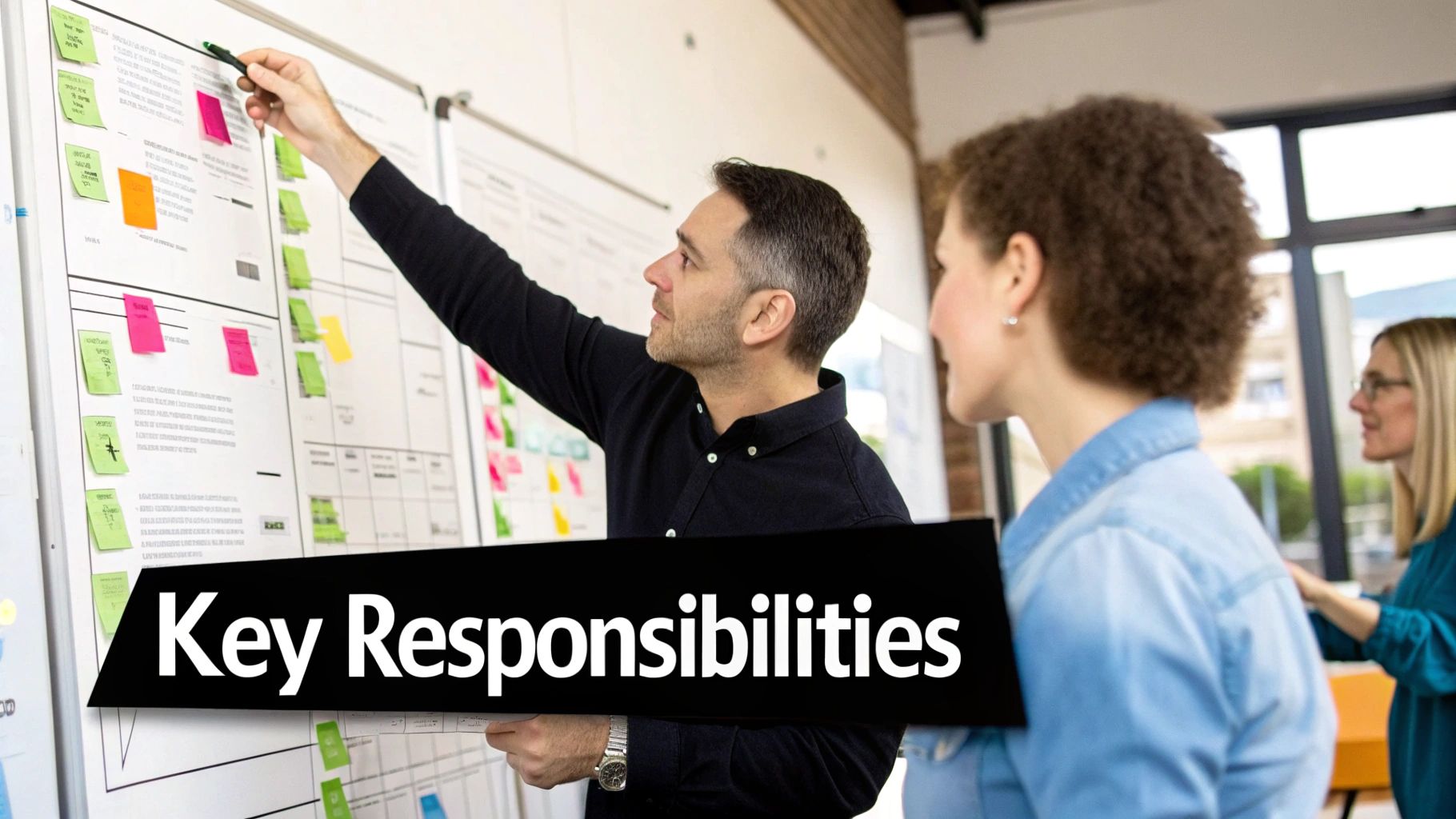
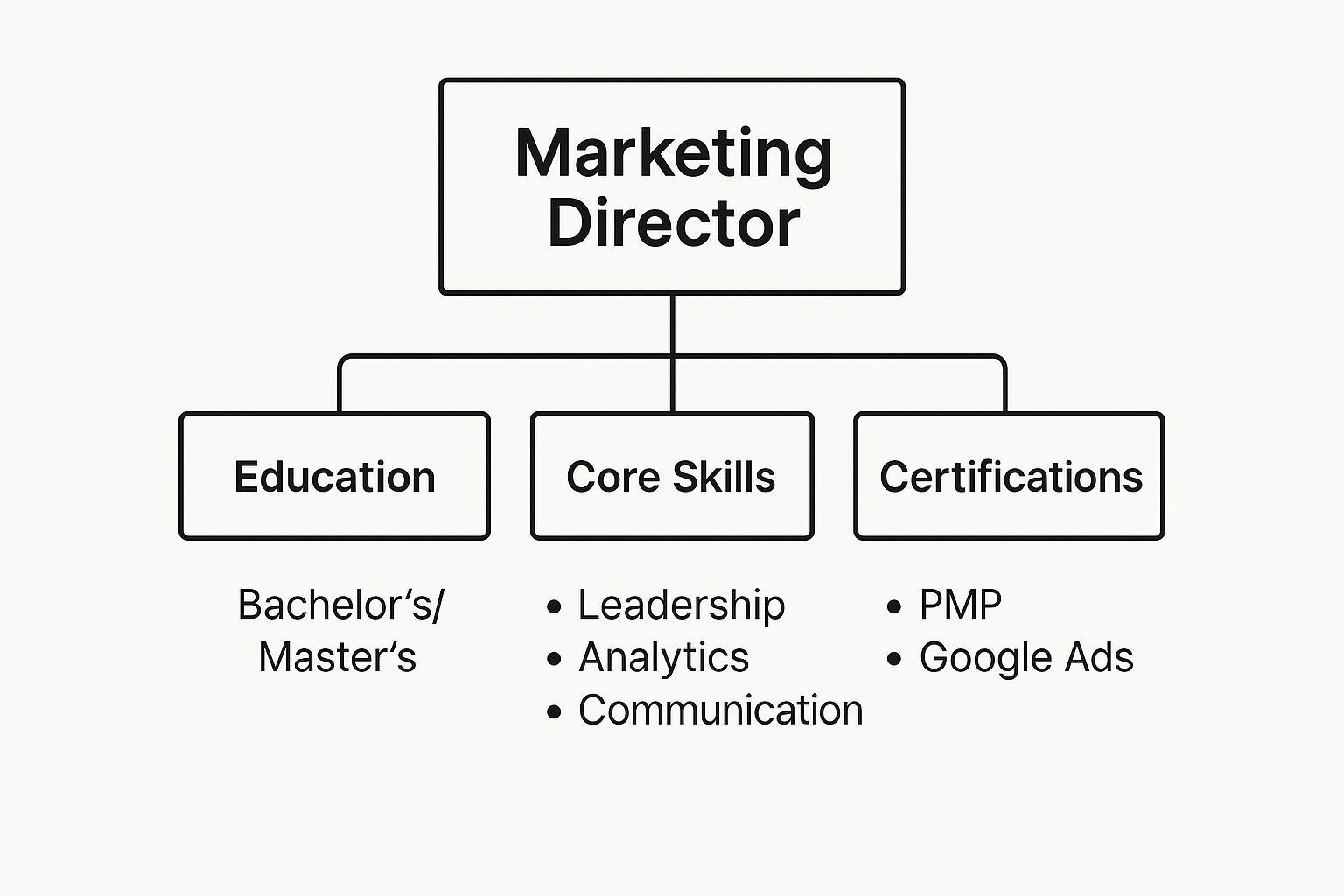



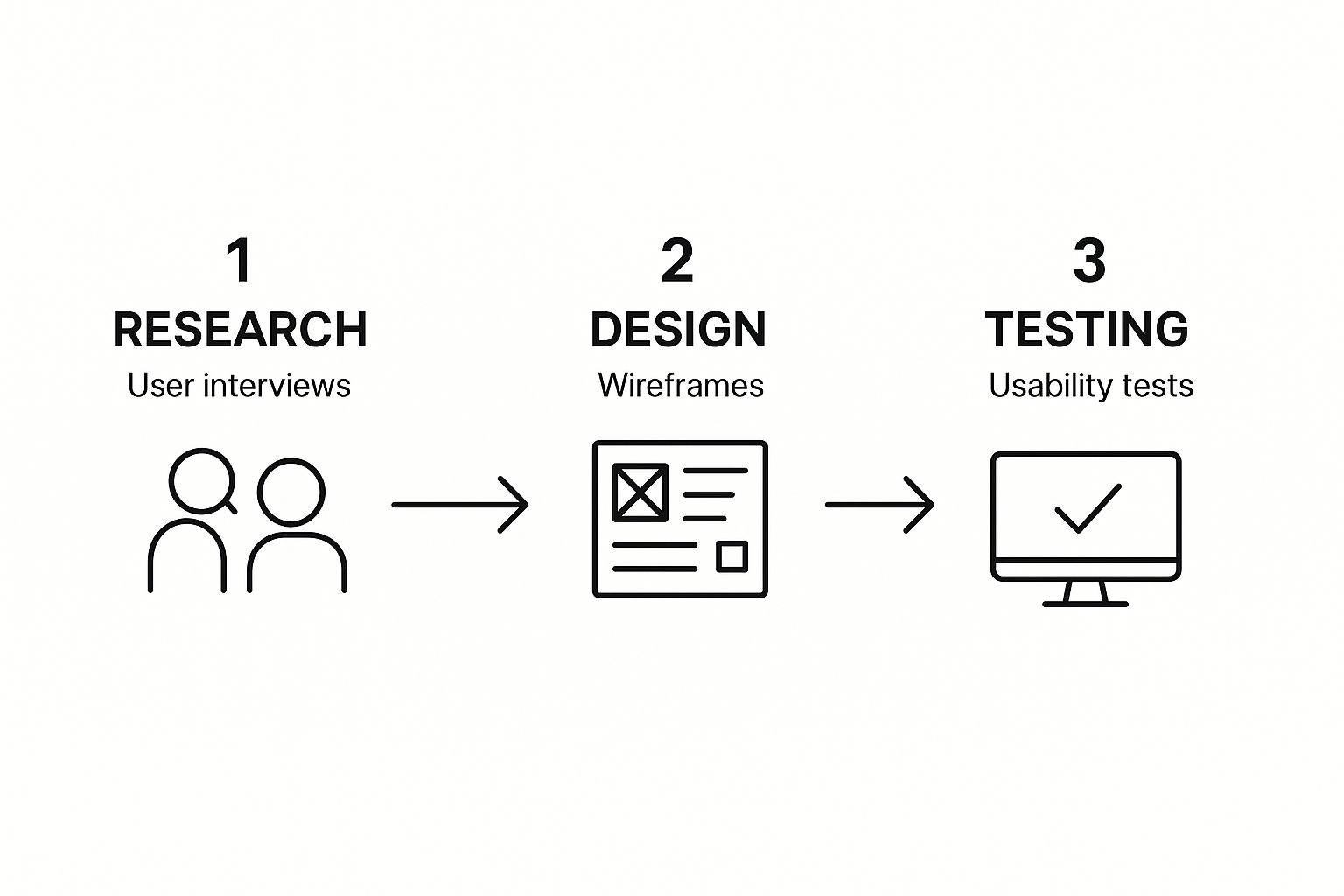



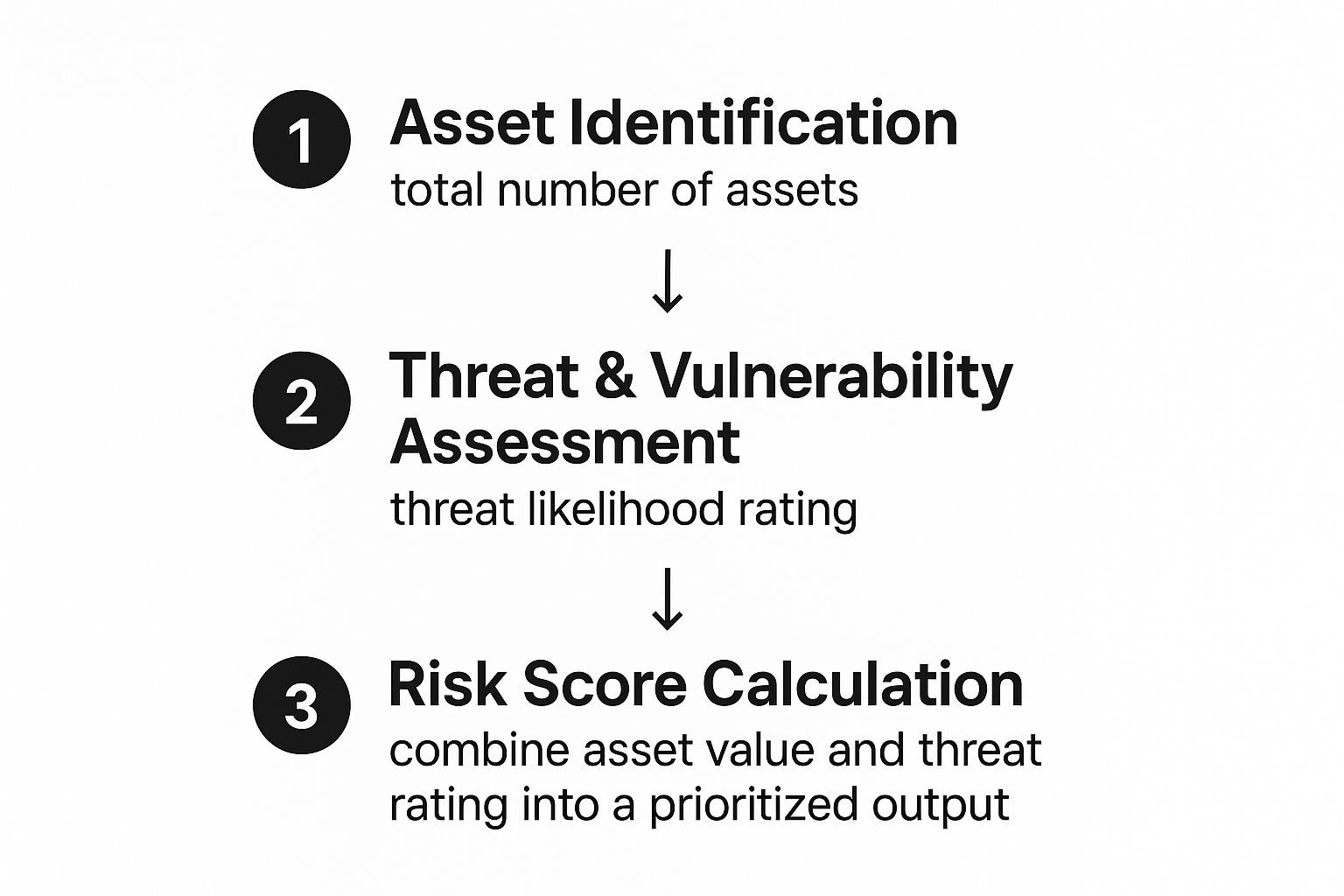



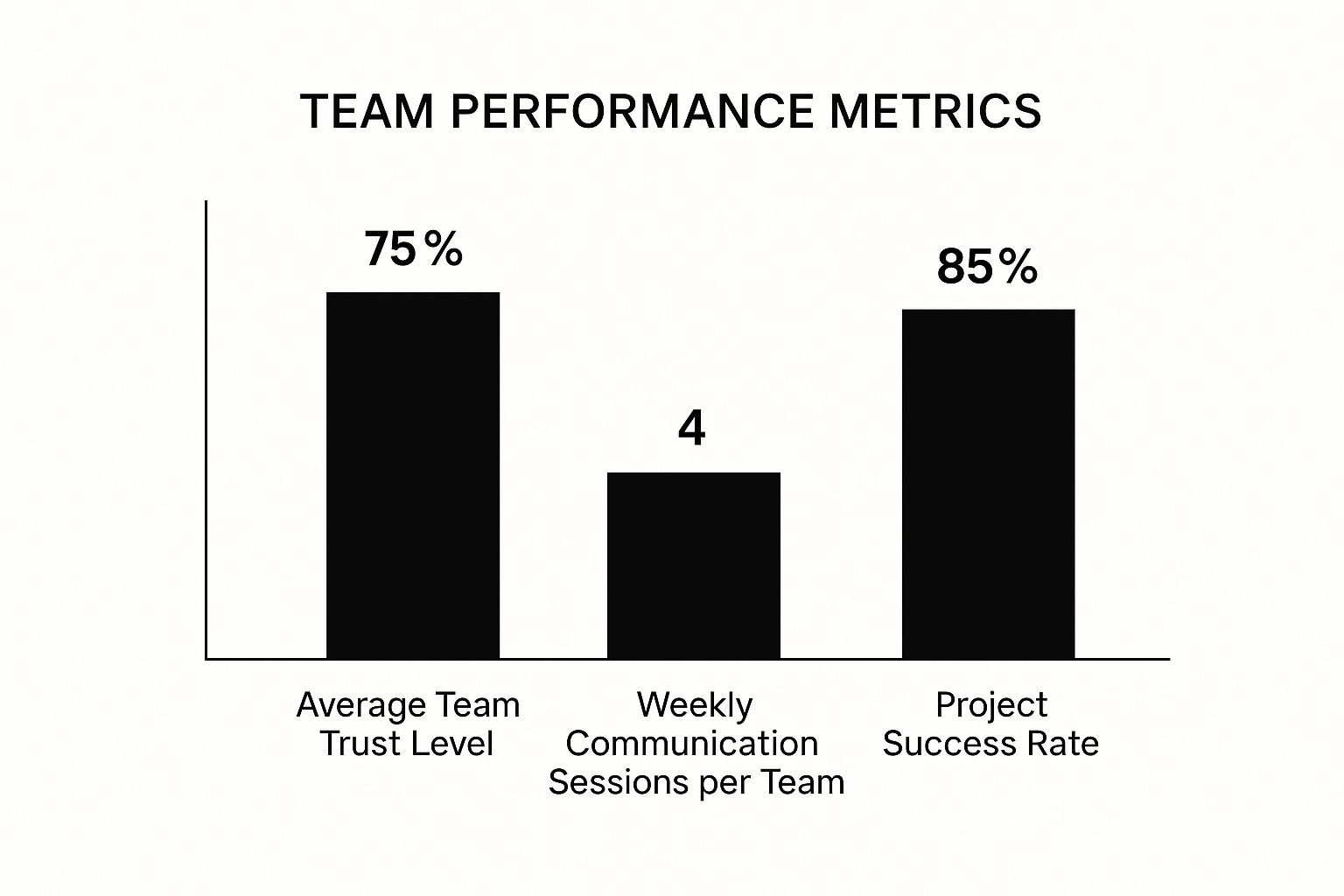




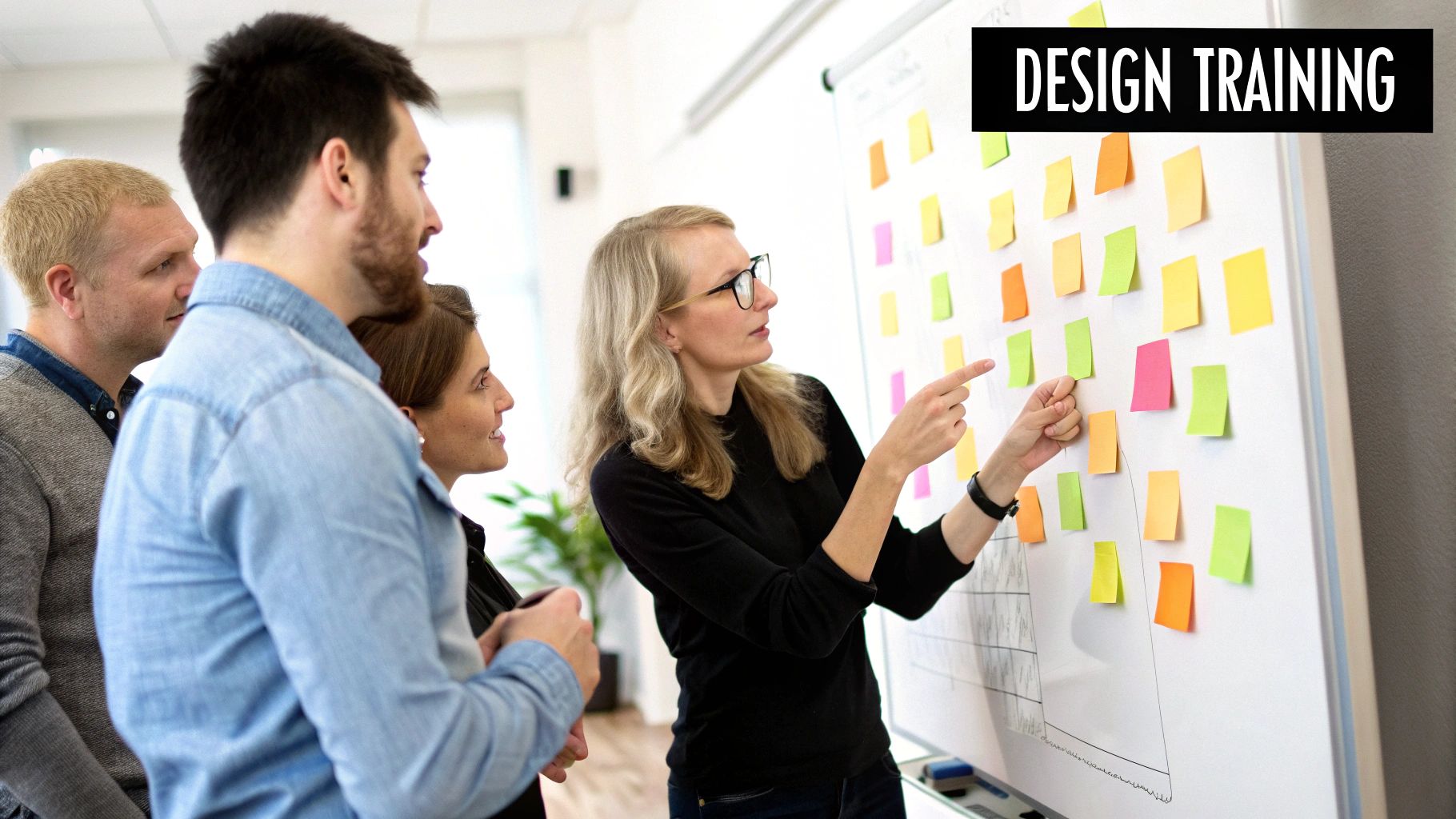





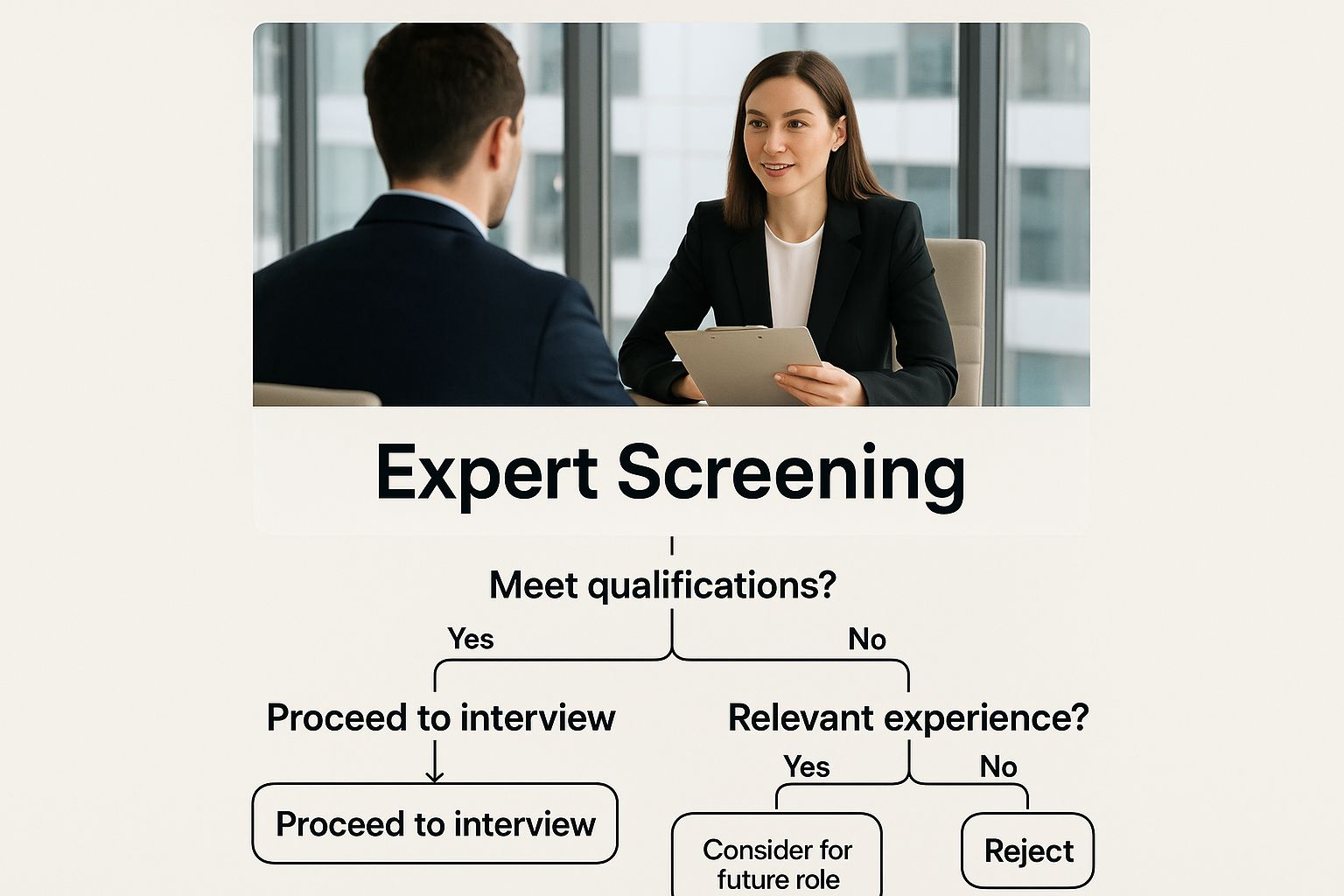


Recent Comments